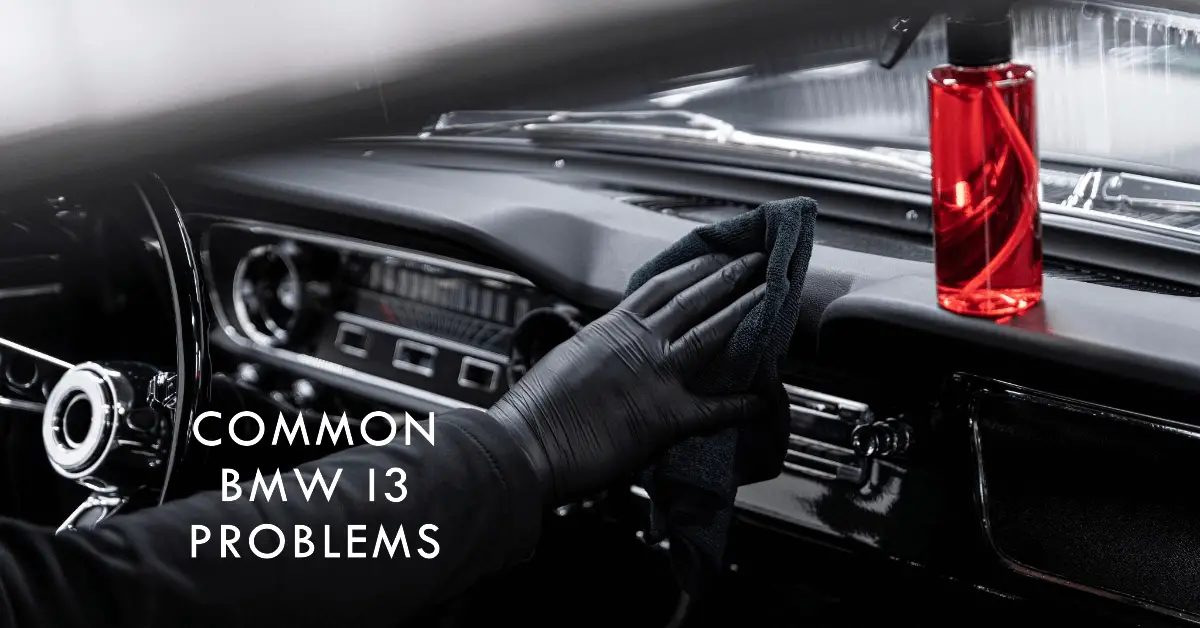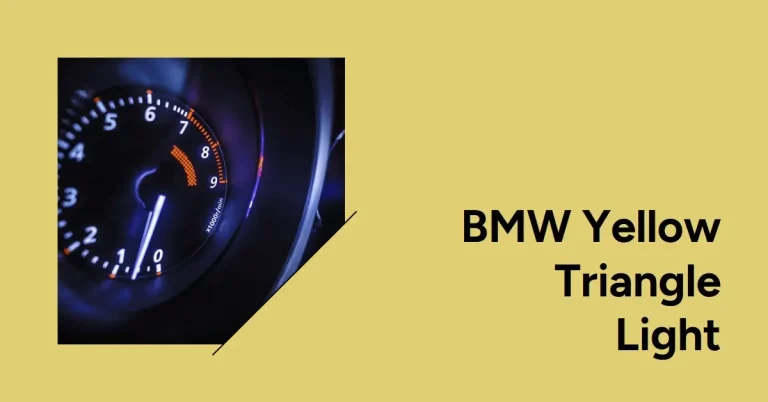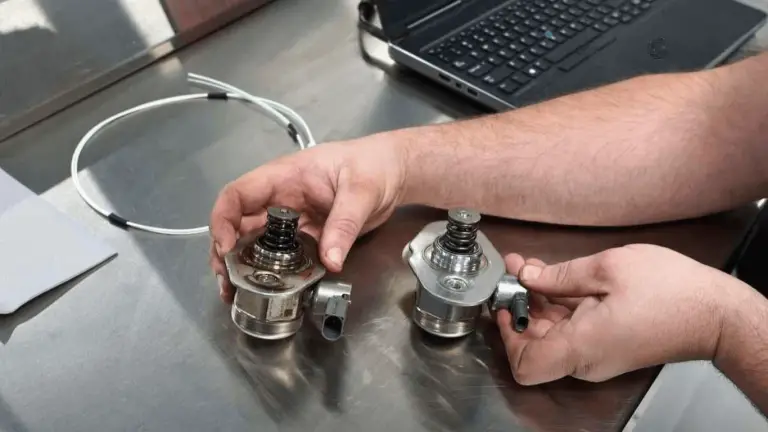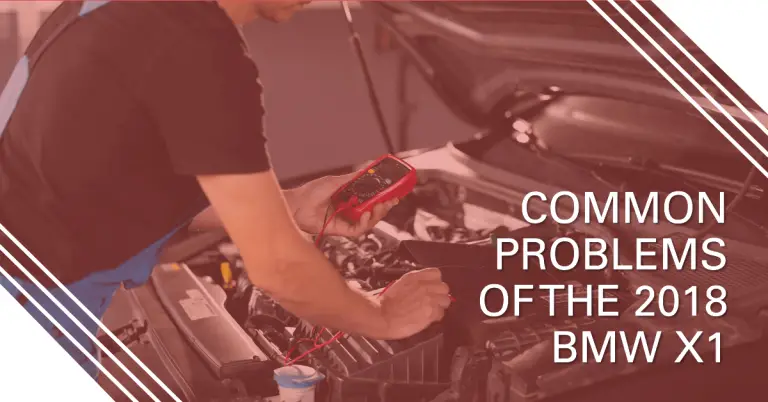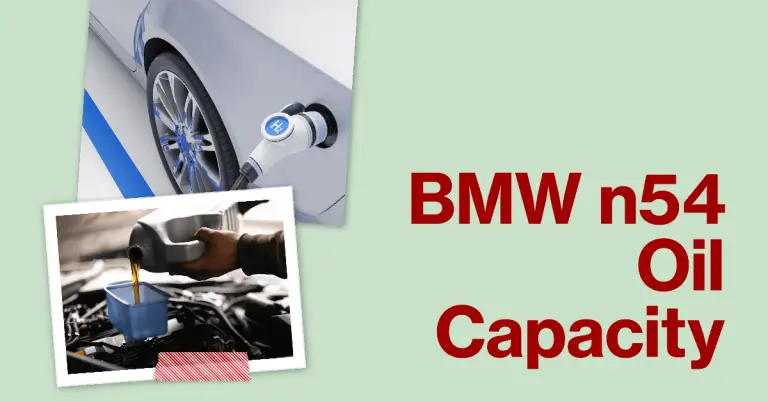BMW i3 Problems: The 15 Most Common Issues & Solutions
So you recently purchased a BMW i3 or are considering buying one used? This innovative electric vehicle (EV) offers exhilarating performance in a futuristic carbon fiber body. But like any car, the BMW i3 has its fair share of potential issues.
In this comprehensive guide, we’ll cover the most prevalent BMW i3 problems reported by owners over the years. You’ll discover real-world troubleshooting tips and expert repair advice for your EV.
How can you diagnose and fix the most common BMW i3 problems? Regular maintenance, software updates, and replacing faulty components are key to resolving issues and keeping your i3 running smoothly. Read on for solutions to battery charging problems, motor faults, carbon fiber cracks, and more.
We’ll provide details on the following BMW i3 repairs and troubleshooting:
- Battery charging and reduced range problems
- HVAC and climate control failure
- Computer and infotainment glitches
- Suspension noise and steering issues
- Brake problems
- Unusual motor and other noises
- Electric motor faults
- Cracking of carbon fiber body panels
- Battery failure and replacement
Gaining a handle on the most prevalent BMW i3 problems will empower you to get any issues diagnosed and corrected promptly. Let’s get started!
Overview of the Innovative BMW i3
The BMW i3 revolutionized the electric car market as the first mass-produced vehicle featuring significant use of carbon fiber. Introduced in 2013, the i3 uses carbon fiber reinforced plastic (CFRP) for the passenger cell or “life module” to keep weight low.
CFRP is an extremely lightweight, strong material often used in race cars and jets. The i3 also has an aluminum subframe and thermoplastic outer body panels. This lightweight design compensates for the heft of the 33 kWh lithium-ion battery pack.
In addition to nimble handling, the rear-wheel drive i3 delivers punchy acceleration up to 100 km/h in 7.3 seconds. The responsive motor provides 184 hp and immediate torque. Early models had an EPA estimated range of 130 km, later increasing to 200+ km with the addition of a larger 42 kWh battery option.
Overall, the innovative i3 earned praise for its performance, high-tech interior, and futuristic styling. But BMW’s first mass market EV was not without a few teething issues. Let’s examine the most common BMW i3 problems reported by owners since launch.
Battery Charging Problems
Difficulty charging the battery is one of the most frequently cited BMW i3 problems. There are a few typical charging issues to be aware of:
Slow or Incomplete Charging
Numerous owners have reported frustratingly slow charge times. A full charge from empty may require double the expected time or fail to complete.
This can result from problems with the charger, charging station/EVSE, or issues with the car’s charging capacity. Cold weather can also significantly slow charging.
Solutions
- Make sure the charging cable is fully inserted at both ends. Check for any damage to the cable or plug.
- Try charging on different/high amperage equipment. Rule out any issues with a slow wall box or faulty public station.
- Cold battery: move the vehicle indoors and give the battery time to warm up before charging.
- Discharge and recharge battery: run battery down to very low then give car an overnight charge to re-calibrate systems.
- Software update: unresolved issues may require a computer system software update.
Intermittent or No Charging
It’s not uncommon for the i3’s charge port to randomly stop recognizing the cable or fail to start charging. This frustrating problem makes reliable charging difficult.
Likely causes include loose plug connections, charging equipment glitches, software bugs, and faulty onboard charging components.
Solutions
- Check charging plug and port for any obstructions like dirt or damage.
- Unplug and reconnect charging cable multiple times to re-establish connection.
- Try different charging equipment and have existing EVSE inspected for defects.
- Hard reset charging systems by disconnecting battery for a minute.
- Update charging and battery management software.
- Inspect onboard charging module and replace if faulty.
Addressing charging problems promptly is essential to avoid being stranded with a dead battery.
Reduced Electric Range
Another top complaint from BMW i3 owners is a loss of the car’s range and ability to hold a charge. For example, an i3 that previously achieved 190 km on a full battery suddenly only manages 130 km.
There are a few factors that commonly contribute to reduced electric range:
Lower Battery Capacity
All lithium-ion batteries lose capacity over time and usage. After 2-3 years, BMW i3 batteries may lose up to 30% capacity. Higher mileage and frequent fast charging accelerate capacity loss.
Frequent complete discharges and exposing the battery to high temperatures also impair battery lifespan. Capacity loss equals fewer usable kilometer per charge.
Solutions
- Use apps to check current battery capacity vs new. Schedule battery replacement once capacity drops significantly.
- Avoid regular 100% discharges which strain battery. Charge more frequently.
- Have BMW dealer perform battery conditioning/recalibration to maximize remaining capacity.
Tire Pressure
In an electric car, low tire pressure drags down efficiency and range. With their reduced rolling resistance, tires at proper inflation are key. Check and fill tires to the door placard PSI at least monthly.
Driving Style
Aggressive acceleration and high speeds create substantial efficiency losses. Gentle acceleration maximizes driving range. Use cruise control to maintain steady lower highway speeds.
Climate Control Use
Heating the cabin in cold weather and A/C in summer significantly reduce range. Use seat and steering wheel heating instead of cabin heat. Reduce A/C use and try recirculation mode.
Battery Failure
While complete battery failure is relatively rare, it does happen. Some owners encountered a fully dead non-charging battery while the car was within the warranty period. This requires replacement of the entire 33 kWh battery pack – an extremely pricey repair.
More commonly, individual “brick” battery modules fail over time. Each module is integrated into the full pack. BMW can replace single faulty modules without replacing the entire battery, typically costing between $3,000-4,000.
Solutions
- Confirm battery failure with voltage tests. Charge failure is not always the battery itself.
- For full pack failure, replacement under warranty or insurance claim are the only options.
- For dead modules, replacing only the faulty bricks is far more economical than a full new pack.
Regular battery monitoring and preemptive module replacements can help avoid full battery failure. Diagnose charging issues quickly to determine if battery replacement is required.
Charging Port Problems
Problems with the BMW i3’s charging port are another headache for owners. Here are some typical charging port faults:
Won’t Open
The charging port door may fail to open when attempting to charge. This makes connecting the charging plug impossible.
Failure to Recognize Charger
Even with the charge port door open, the port may fail to recognize a connected charging cable. So charging never starts.
Solutions
- Check for obstructions like ice or dirt preventing port from opening.
- Verify the charge door locking mechanism is working properly.
- Tap the keyfob unlock button with the charger connected to prompt the car to re-check connections.
- Try charging again in 5-10 minutes to allow a system reset.
- Hard restart the i3 computer system to troubleshoot electronics issues.
- Replace charging port module if determined to be faulty.
Charging issues like these often relate to electrical gremlins. Patience and re-trying connections can resolve intermittent problems. Have BMW technicians inspect charge ports that continually fail to work.
HVAC and Climate Control Failure
BMW i3 owners in very hot or cold regions report frequent climate control failures. Common issues include:
A/C Not Blowing Cold
Air conditioning failing in summer heat is a leading gripe among drivers in warm climates. Causes include coolant leaks, compressor issues, and faulty climate control modules.
Heat Failing in Cold Weather
Lack of heat is very problematic in frigid temperatures. Potential causes include low coolant, a stuck open thermostat, and heater core problems.
Solutions
- Check refrigerant level – recharge if leak suspected. Confirm compressor engages properly.
- Inspect climate control module and cables for faults. Replace if not functioning normally.
- Check coolant level and fill if low. Pressure test system for leaks.
- Make sure thermostat opens and closes properly. Replace if stuck.
- Flush debris from heater core that could restrict flow. Replace core if damaged internally.
Keeping the climate control system well maintained is crucial. Proactively fixing small leaks and issues can prevent major A/C or heater failure at the worst possible time.
Computer and Infotainment Problems
As with any modern vehicle, the BMW i3’s complex computer systems can develop glitches. Owners report various computer and infotainment issues including:
Lagging and Freezing
Slow system responsiveness and screens freezing momentarily then resuming are telltale signs of computer problems. This affects both the main iDrive display and dashboard screens.
Black Screens
In rare cases, the i3’s digital displays may go completely black and unresponsive. This failure of the visualization screens understandably leaves drivers stranded.
Solutions
- Restart the i3 computer system by turning it off and on again. Try holding the start button for 10+ seconds for a hard reset.
- Disconnect and reconnect the battery to force a full system reboot.
- Update display and navigation software to the latest BMW version.
- If problems continue, BMW may need to flash reprogram or replace a faulty ECU module.
Persisting computer glitches and black screens generally require a trip to the dealership. But try simple resets first to revive buggy systems.
Suspension Noise and Steering Problems
The BMW i3’s handling excels thanks to its light weight and low center of gravity. But even the sporty suspension and steering components can develop issues.
Clunking noises when turning sharply are a classic symptom of suspension wear. Owners also report occasional steering wander and alignment problems.
Noisy Sway Bar Links
The i3’s front sway bar links are prone to premature wear and failure. Bad bushings or joints make clunking noises when cornering.
Solutions
- Inspect sway bar links and replace if loose joints or cracked bushings found.
- Check strut mounts and shocks for deterioration that could cause noise.
- Confirm no play in tie rods or loose steering components that lead to alignment issues.
- Rotate tires and perform alignment to address any slight drifting or pulling.
Though not ubiquitous, replacing faulty sway bar links and tightening steering parts resolves most i3 suspension and steering complaints.
Brake Problems
Braking is a critical system that BMW i3 owners report occasional issues with. Here are some of the most common brake problems:
Reduced Braking Power
Drivers may experience a spongy brake pedal and need to push far down to stop. This loss of braking power is very dangerous.
Brake Failure
In severe cases, the i3 brakes may fail completely. This total loss of braking can occur with or without warning.
Solutions
- Check brake fluid level and condition. Fluid must be fresh and at proper level.
- Inspect vacuum lines for damage that allows air intake. Tighten connections.
- Test brake master cylinder operation. Master cylinder failure is a likely culprit for braking issues.
- Replace brake master cylinder assembly if faulty or leaking.
- Flush brake lines and calipers if contamination present. Replace worn pads and rotors.
Catching brake problems early and replacing worn components reduces the risk of catastrophic failure and accidents.
Strange Noises from the Electric Motor
Unfamiliar noises from EV components like electric motors can be alarming. But some sounds are completely normal while others indicate problems.
High Pitched Whine
A faint whirring or whine at higher speeds is normal. It comes from the electric motor’s magnets and inverter. No cause for concern.
Rattling Noise
Intermittent rattling while driving may indicate a loose component contacting the chassis or rear suspension. Have BMW technicians investigate any abnormal rattling.
Solutions
- Determine if whine is within normal levels or excessive. Excessive electrical noise points to issues.
- Check chassis components like exhaust heat shields for rattling contact points and secure.
- Inspect rear suspension for any loose or damaged components causing noise.
Learning to distinguish expected electric motor noises from problematic ones takes some EV experience. Seek out BMW expertise for any unfamiliar rattling or grinding.
Motor Problems
As the sole source of power, the BMW i3’s electric motor is obviously critical to functioning normally. Motor issues are not widespread but do surface occasionally:
Loss of Power
Reduced acceleration or top speed can signify inverter or motor difficulties. Power loss may be intermittent or permanent.
Motor Failure
Although rare, some i3 motors have completely failed. This may result from manufacturing defects or extreme wear and tear.
Solutions
- Test inverter module that controls motor function. Replace inverter if faulty.
- Inspect connections between inverter, battery, and electric motor.
- Have BMW thoroughly test motor operation and integrity. Replace if damaged stator or rotor found.
- For motor failure under warranty, pursue a warranty claim through BMW.
Diagnosing the source of power loss requires specialist EV troubleshooting skills. BMW technicians can determine if the inverter or motor itself requires repair or replacement.
Carbon Fiber Cracking
With its extensive use of carbon fiber reinforced plastic, minor cracks can develop in the i3’s body panels. Here’s what to know about carbon fiber cracks:
Small Surface Cracks
Over time, small spiderweb-like cracks may appear on exterior body panels. These are usually just surface flaws in the finish.
Major Stress Cracks
Larger cracks from collision impact or structural strain are less common but compromise the component’s integrity.
Solutions
- Polish small cracks to minimize visibility. Apply touch up paint to prevent oxidation.
- Use specialty auto body fillers to permanently repair more visible surface cracks.
- Severe cracks require replacement of damaged carbon fiber part. This is costly without insurance help.
Thankfully most carbon fiber cracks are purely superficial rather than structural issues. But monitor closely for any cracking that worsens over time.
Conclusion: Keeping Your i3 Running Strong
In this guide, we’ve explored the 15 most prevalent BMW i3 problems reported by owners over the years. Difficulties charging, computer glitches, battery failure, braking issues, and motor faults represent the typical trouble areas.
Armed with this overview of common faults, you can now proactively maintain your i3’s complex systems. Identify issues early and work with experienced EV repair professionals when trouble arises. Keep up with software updates, regularly inspect the carbon body, and monitor battery capacity.
While costly repairs are never welcome, fixing problems promptly reduces safety risks. Have BMW dealership technicians diagnose any persistent electrical gremlins, charging failures, or performance issues. With proper maintenance and care, your innovative i3 will deliver many years and miles of eco-friendly driving.

